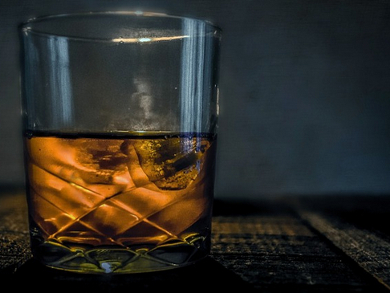The “original whisky” from the barrel is diluted from 70 vol-% of alcohol to about 40 vol-% before it comes into the bottle. And true whisky experts know: diluted with a bit of water, the aroma of a noble drop may unfold even better. But why is that so?
Björn Karlsson and Ran Friedman, Linné University, Kalmar, Sweden, have used computer simulations to investigate how water/ethanol mixtures behave in the presence of the flavoring agent guaiacol and how the individual components interact with each other.
In addition to water and alcohol, whisky contains many different organic ingredients, which characterize the taste decisively. Responsible for the typical smoky flavor of Scottish whiskys are, for example, phenols, in particular, the plant material guaiacol.
The scientists found that guaiacol is preferentially mixed with ethanol in the liquid. It can form hydrogen bonds to the water molecules as well as to the alcohol molecules. However, in the case of ethanol, there is also an additional attraction between the short alkyl chain of the alcohol and the aromatic ring of the aroma molecule. If the whisky is diluted to 45 to 27 vol-% of alcohol, the guaiacol loses more and more contact with the ethanol. The guaiacol rises to the surface of the liquid and thereby changes the smell and taste of the whisky.
There is a narrow ridge between whisky optimization and whisky disaster, the scientists say. Whatever mixture is the ideal, always depend on the whisky and the aroma components characteristic for it.
- Dilution of whisky – the molecular perspective,
Björn C. G. Karlsson, Ran Friedman,
Sci. Reports 2017.
https://doi.org/10.1038/s41598-017-06423-5




